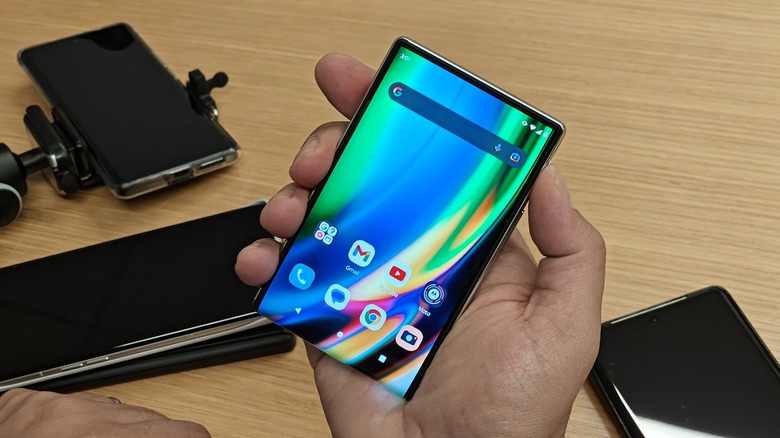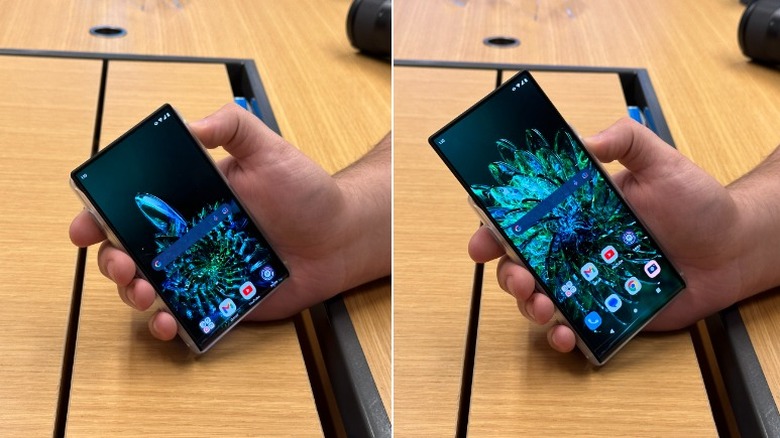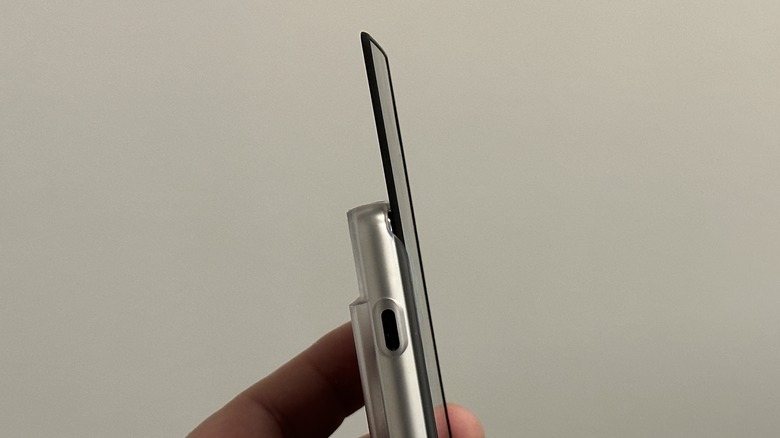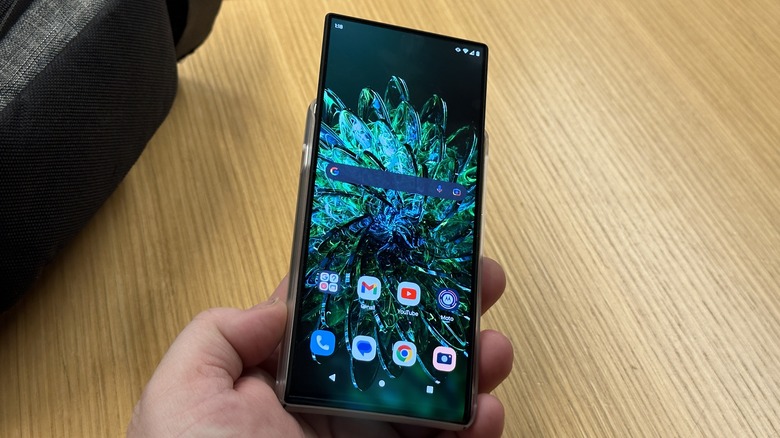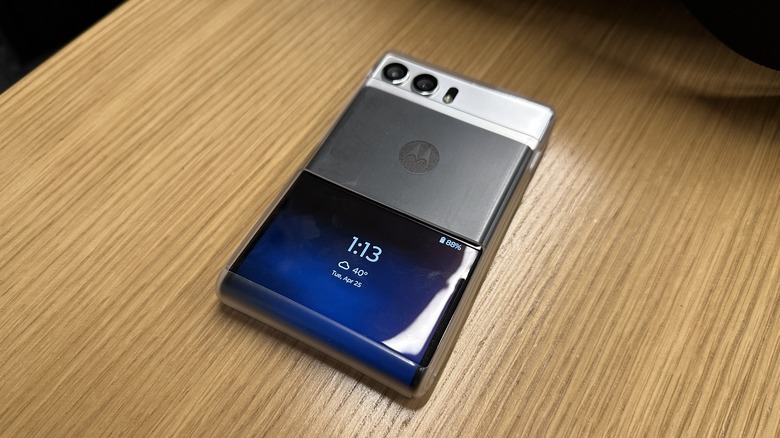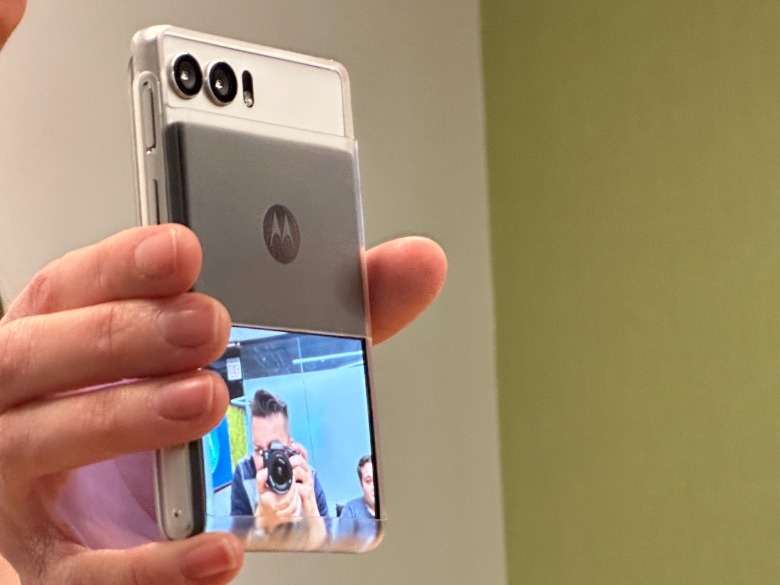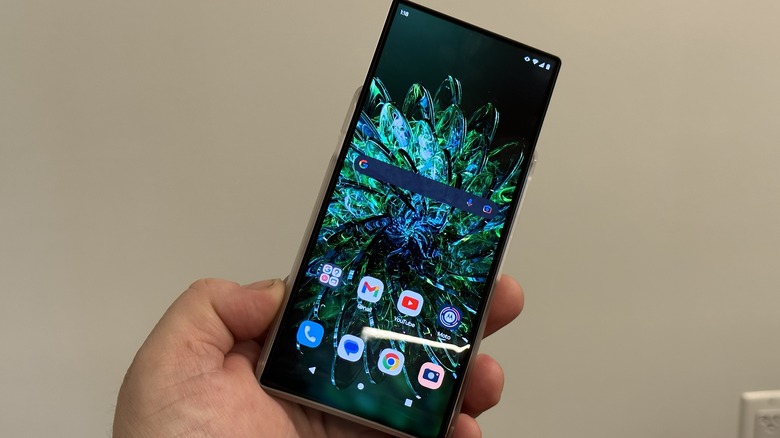Motorola Rizr Hands-On: You Gotta Know When To Roll 'Em
This week, I had the opportunity to visit Motorola's headquarters in my hometown of Chicago, IL, and go hands-on with the Motorola Rizr, or as Motorola officially calls it, the "rollable smartphone concept." That's not nearly as catchy so from here on in, I'm just going to call it the Rizr, not to be confused with the Razr, of course. This is Motorola's expanding screen rollable phone that starts off as a compact smartphone and expands to a 6.5" display.
Unlike other rollable concepts we've seen, this screen actually rolls around the outside of the phone, so when the display is rolled up, a fair amount of it is visible on the back of the phone. The unit I saw had a purpose-built case on it that protected the phone pretty well, especially when my butter fingers dropped it, but that case is removable.
There's a lot about the phone that Motorola couldn't/wouldn't talk about — notably specifications — but there's a good reason for that. It's a concept phone. It doesn't really matter what specs are in there; Motorola is just interested in seeing if it works in the first place. The phone was entirely constructed in Motorola's facility at Chicago's Merchandise Mart, and since the company let me play with it, I wanted to share some thoughts.
What is the Rizr?
At its core, the Motorola Rizr is a rollable smartphone that takes a compact package and expands it out to a more usable size. Specifically, the phone is a 5-inch smartphone with a 15:9 aspect ratio. When you double press the power button, the screen on the phone rises 39 millimeters into a 6.5-inch smartphone with a 21:9 aspect ratio.
Motorola made one smart decision right out of the gate by focusing more on aspect ratio rather than size. The aspect ratio has a lot more to do with the comfort and use of a phone than the screen size. If a phone is too tall and skinny, it won't "feel right", which is why on many book-style foldables (such as the Samsung Galaxy Z Fold 4), the outer screen is harder to use. Your hands, fingers, and thumbs are all in the wrong place.
When you nail the aspect ratio, the phone is much easier to use and much more familiar. Of course, that doesn't mean that this phone will be a hit. Indeed, Motorola isn't convinced this will become a consumer product for one key reason.
Know when to walk away
It should go without saying that this phone seems like it's super delicate. From the fact that the entire screen is exposed all the time (when the case is off) to the fact that when the phone extends the screen including the backing is maybe one or two millimeters, it just feels like this phone is not meant for this world. The one time I did drop it, everyone in the room jumped. For the record, the phone lived.
But if this phone went up for sale, and people bought it, you can bet some people would take the case off, which would leave the rolled up screen exposed on the front, bottom, and back of the phone. If the screen is extended and the phone gets dropped upside down, it's game over and we can all go home. Of course, Motorola is confident enough in this phone that it has made 15-20 of them. Not only that, it has sent those phones out to some people as part of a closed "friends and family" beta test to see how it performs in the real world. That's a lot of confidence.
I'm not an engineer, nor do I play one on TV, so maybe I'm not the right person to ask, but the Rizr in its current form just seems like it's too delicate to exist. But this is a proof of concept, so what I saw will definitely not be the final product. Motorola is using this opportunity to learn not only about its engineering but about the user experience, so let's get into some of the cool things this phone can do.
Rise to the occasion
Right off the bat, the obvious cool thing this phone does is expand to make itself bigger. You can expand it by double pressing the power button, but Motorola also worked in a couple of automatic expansion routines. When you're watching a youtube video and you turn the Rizr horizontally, the phone expands by itself. It retracts when you go back to the home screen.
Similarly, if you're holding the phone in portrait orientation and you open a compose window in Gmail, the phone automatically expands to give you a larger campus on which you can write. It's this kind of intuitive thinking that can ultimately allow people to see the utility in a new form factor. People need to use it, so Moto can figure out when the phone should and should not expand on its own.
The screen also moves down when it needs to. The selfie camera and earpiece are both located under the display, so when you make or receive a call or when you open the selfie camera, the screen drops down slightly to expose those elements. If you're wondering why the phone doesn't just always expose those elements even when you don't need them, it's because when the phone returns to its normal state, it gives you about as close to a no-bezel experience as you're going to find on a smartphone.
Of course, I don't know which of those is preferable. Neither does Moto, which is why it built and is testing these prototypes.
Why a rollable instead of a foldable?
When the screen is rolled up, it's still exposed on the back of the phone, and Moto has made some smart moves here as well. That back screen turns into an always-on display, so when the phone is on its face, you still get a time display and notifications. Moto is still trying to figure out the best way to handle interacting with those notifications though. When you tap on a notification, should it open in a widget on that small screen, or should it open in the app on the main screen? That's another question for the best testers.
Also, when you're in the camera interface, you can use that opposite screen to display the viewfinder to your subjects. If you prefer, you can change that reverse screen to a smiling emoji to capture the kids' attention. So having the screen roll around the outside of the phone is useful, even if it does leave the entire screen susceptible to damage.
This is not the final Rizr
Overall, I came away with mixed feelings about the Rizr, or the rollable smartphone concept. I think Motorola has some really good ideas here, and some of those ideas are super viable. If Moto could make the backplate behind the rollable screen thicker and more resilient with a tiny bezel to protect the phone from drops, that would be a big start. Also, despite the obvious utility, I'm not sure I like the idea of the screen rolling around the outside of the phone. Some drone engineers I know have told me that it's not hard to make a drone that can fly, but it's really hard to make a drone that can survive a crash. The same philosophy is true here.
This smartphone rollable concept as it exists today likely will not see the light of day, but I'm convinced something like it will. The key clue here is in the number of these devices Motorola built. If you want to build a concept, you build one or two just to show that you can. But if you want to learn and evolve that concept, you build a dozen or two, and that's where Moto is. Based on what Motorola has already said about this phone, I'm very optimistic about its future, even if it will need a few more trips to the drawing board to get it right.
